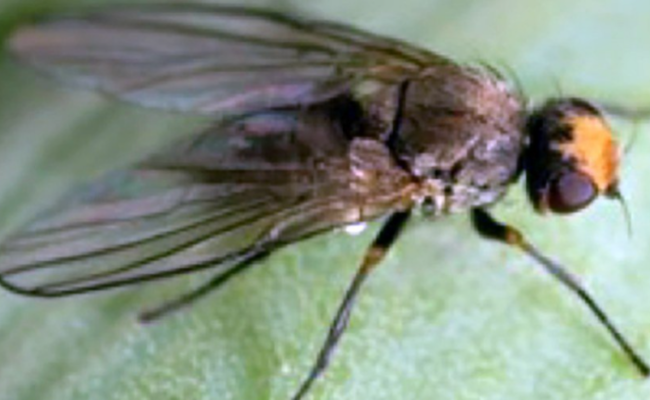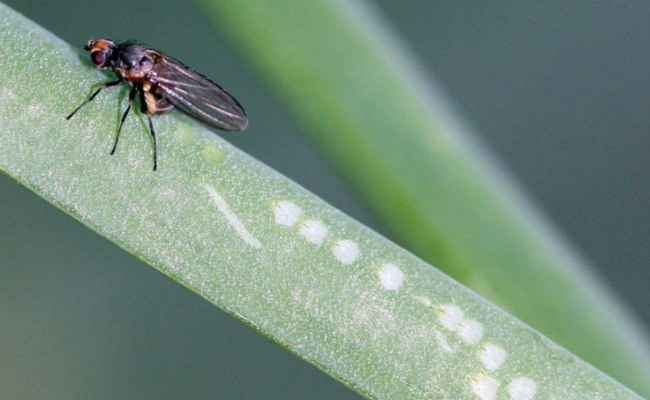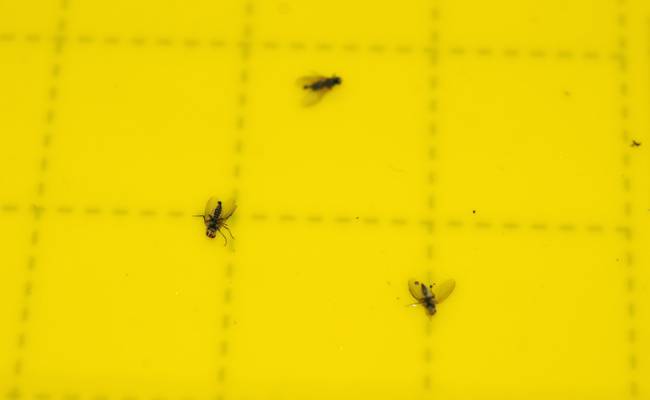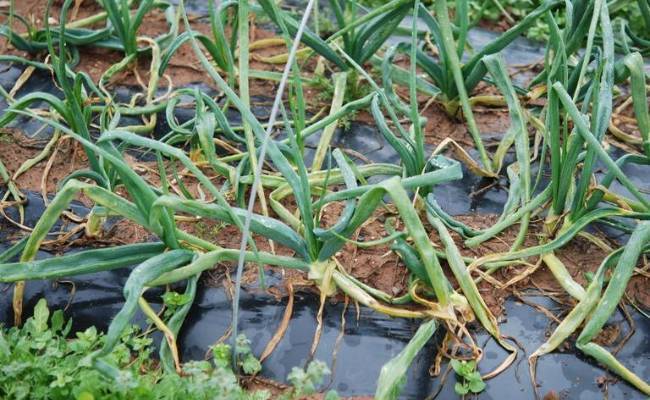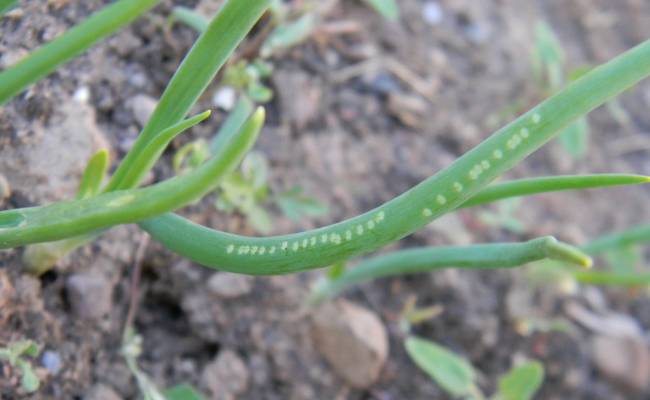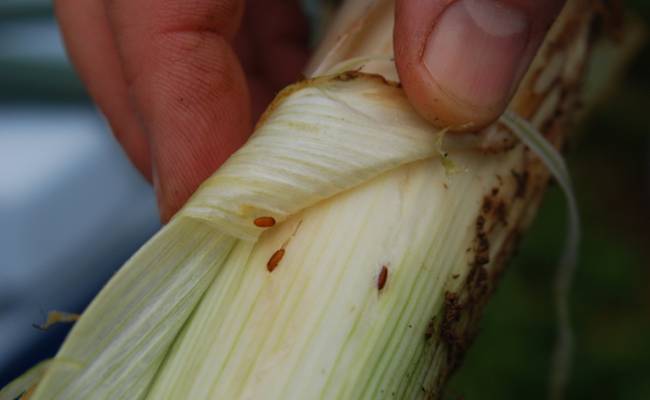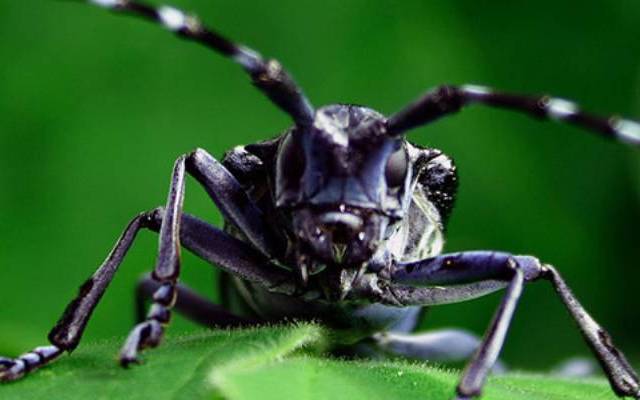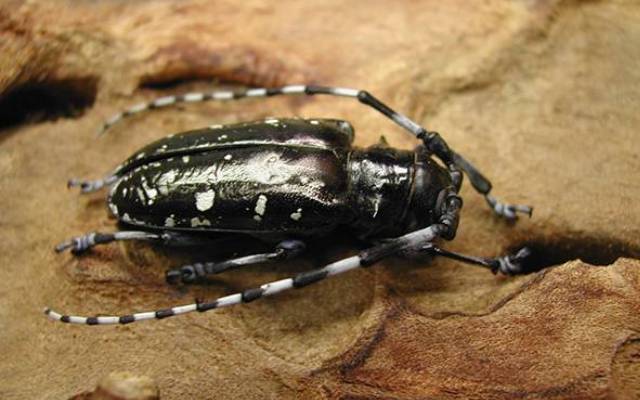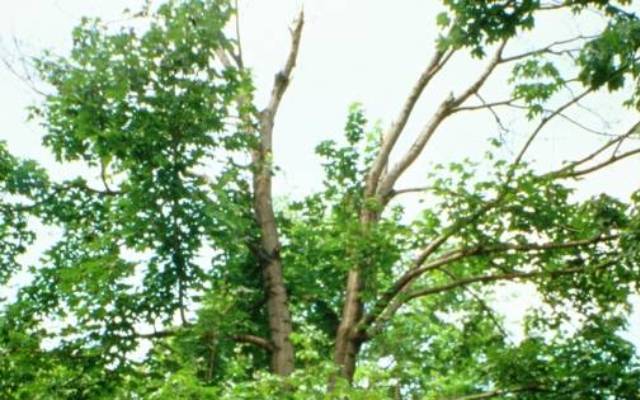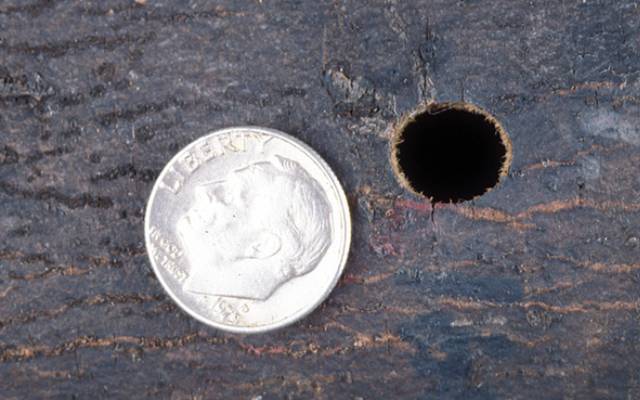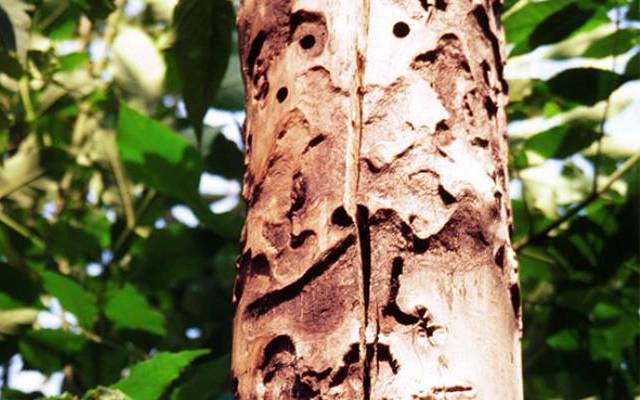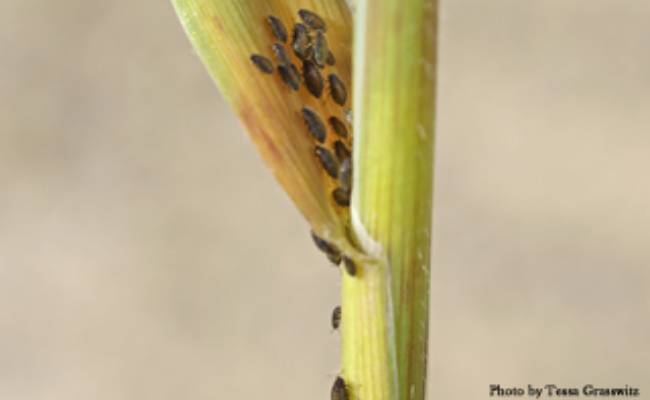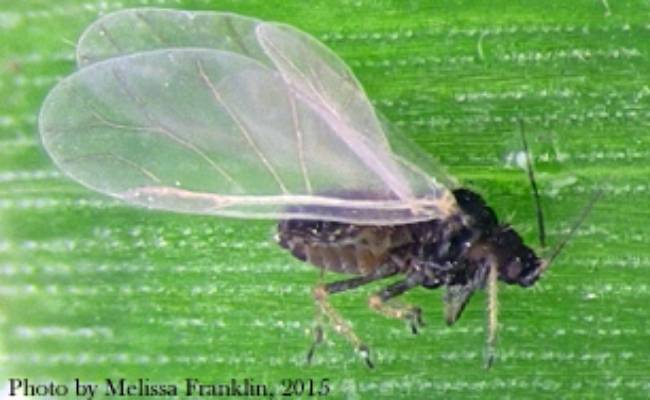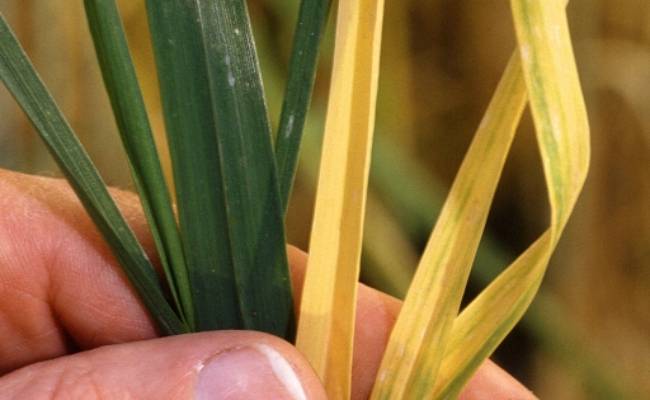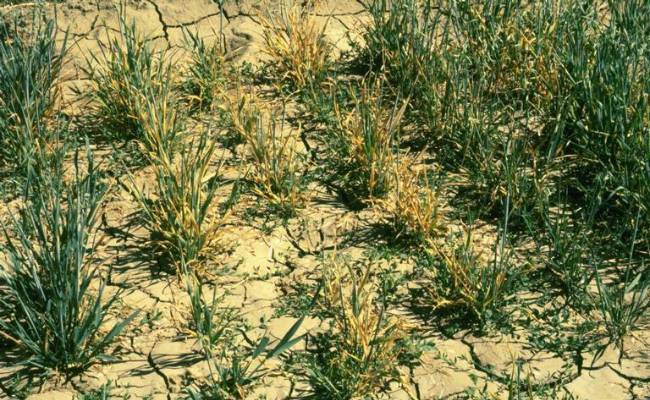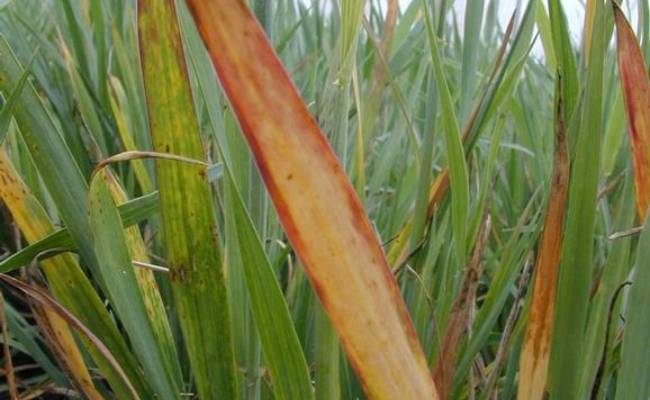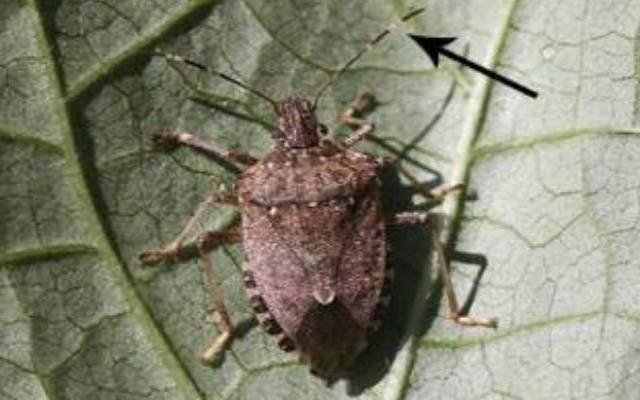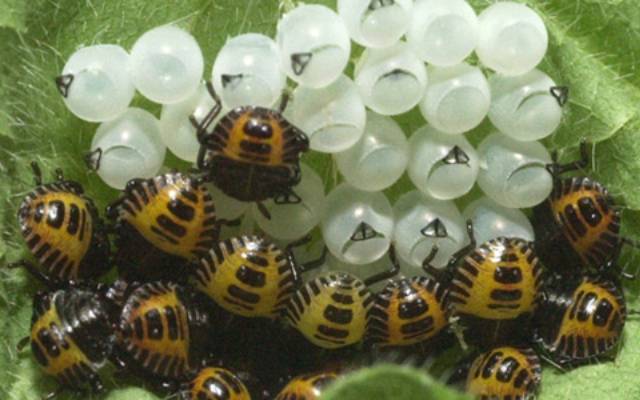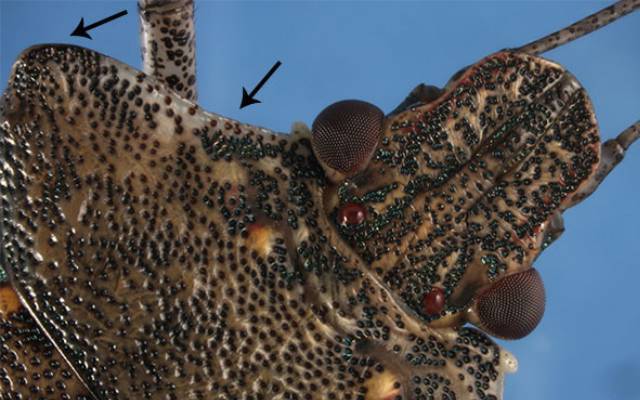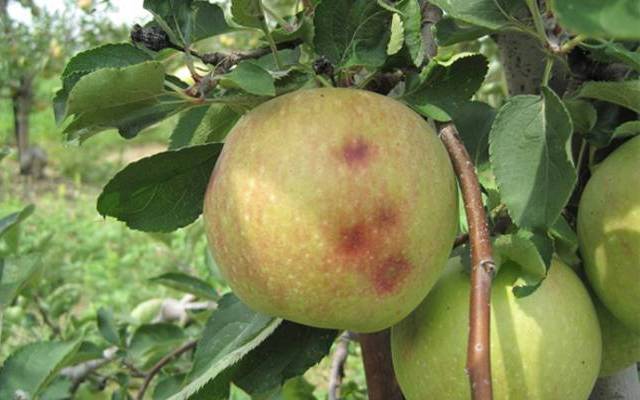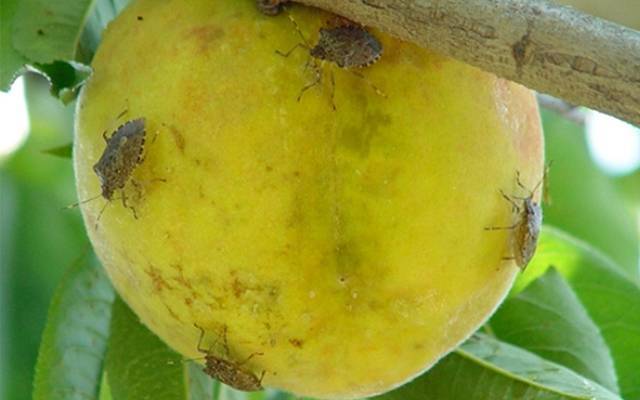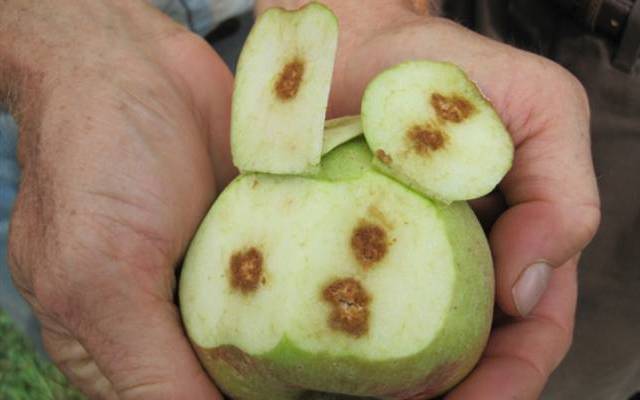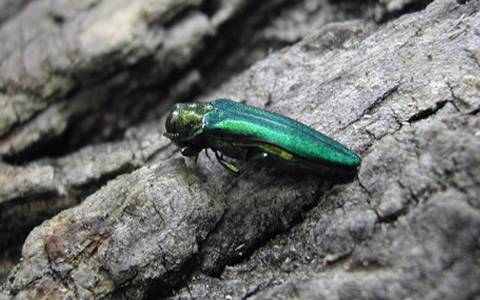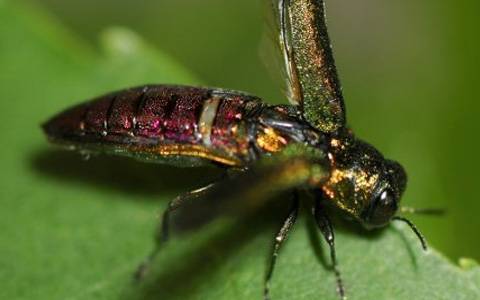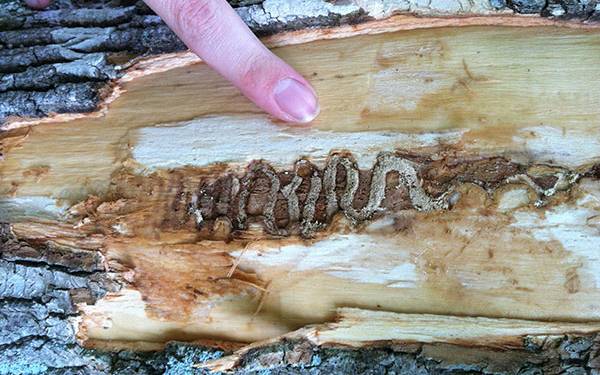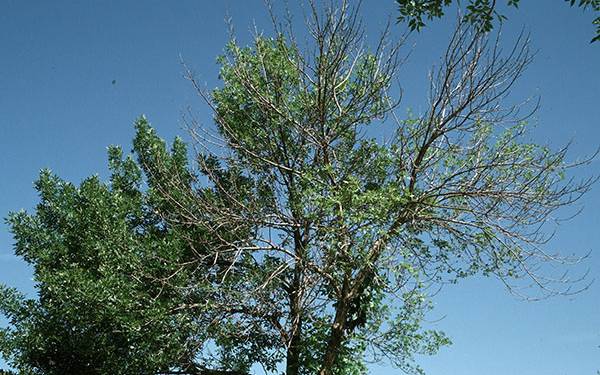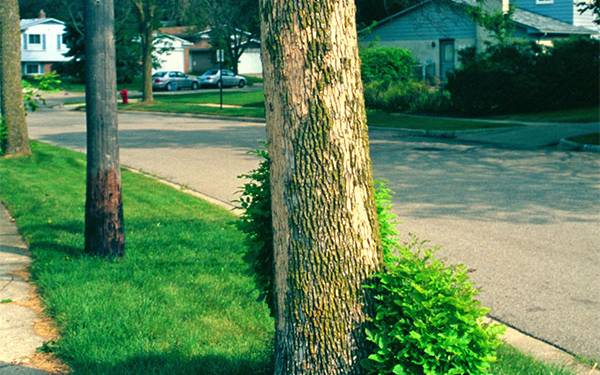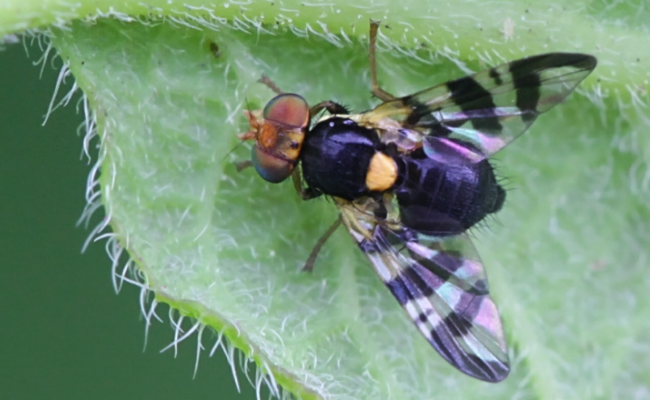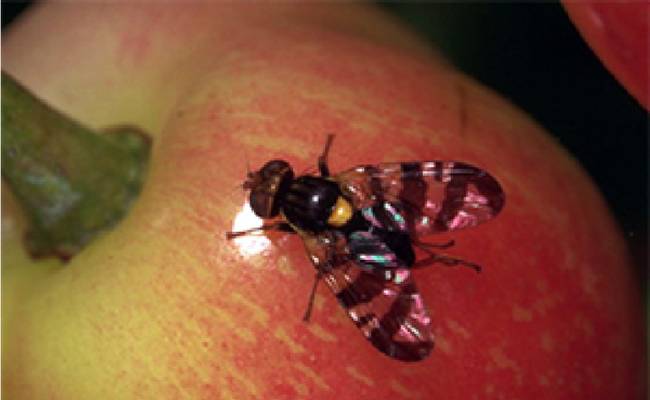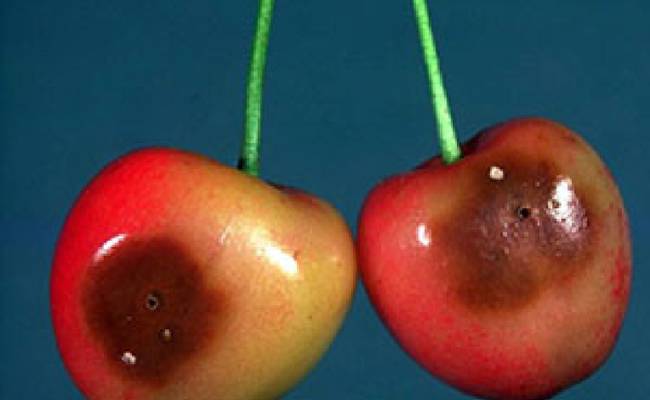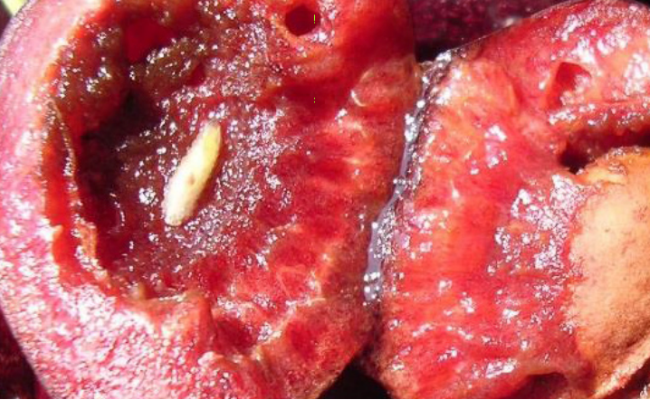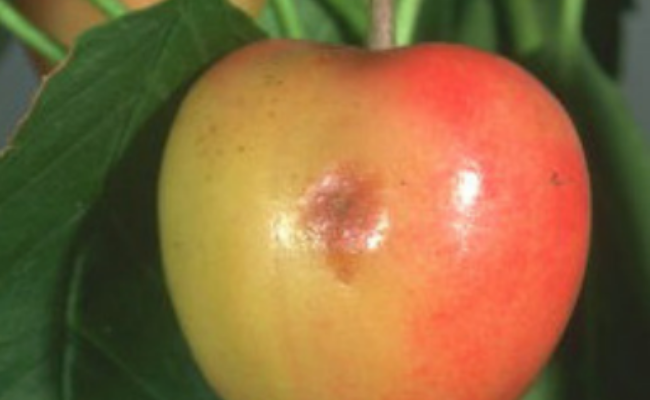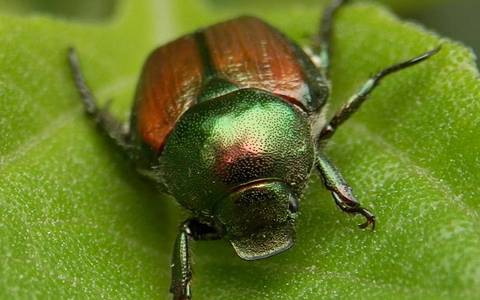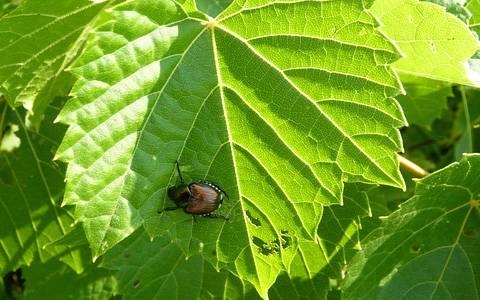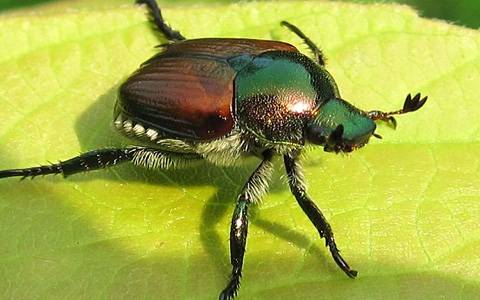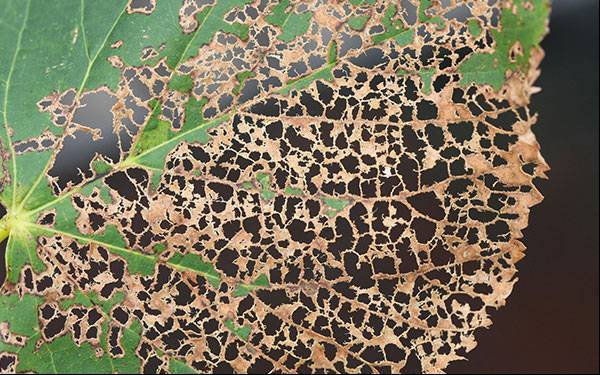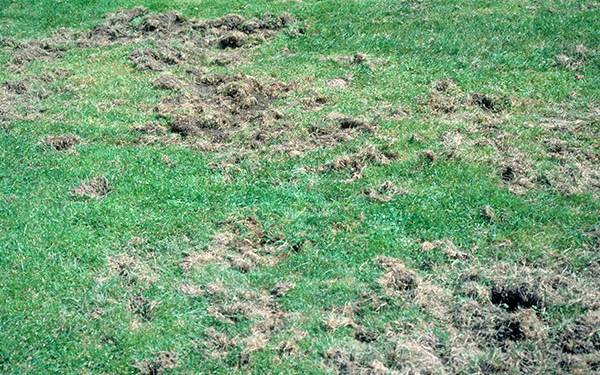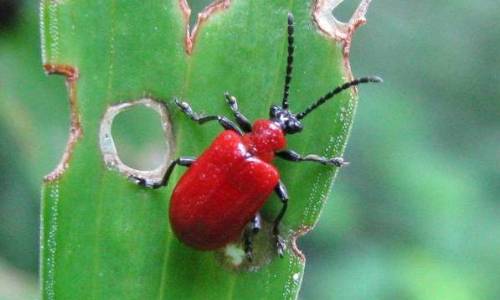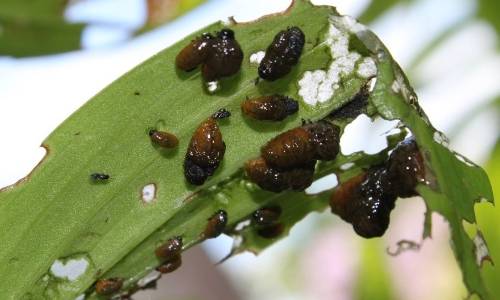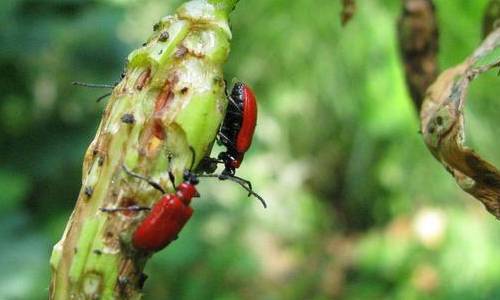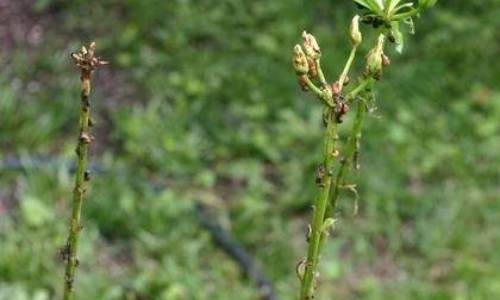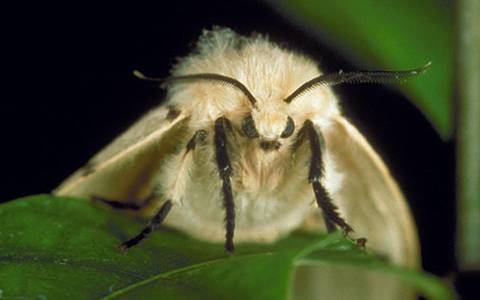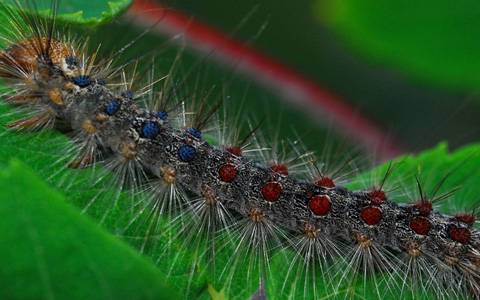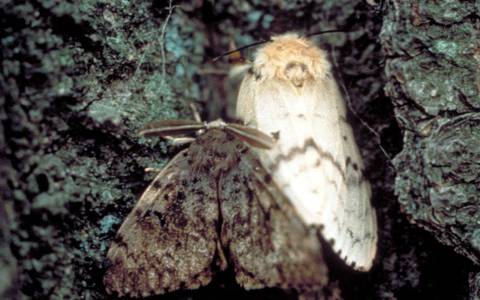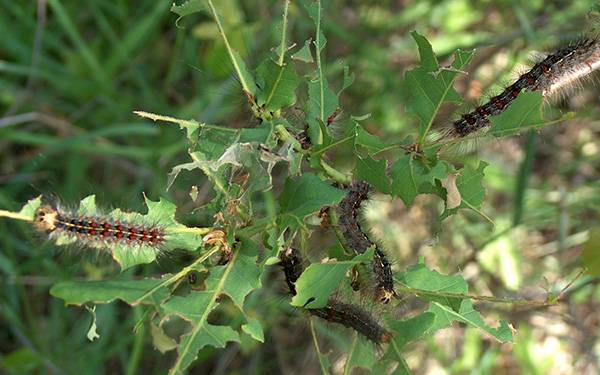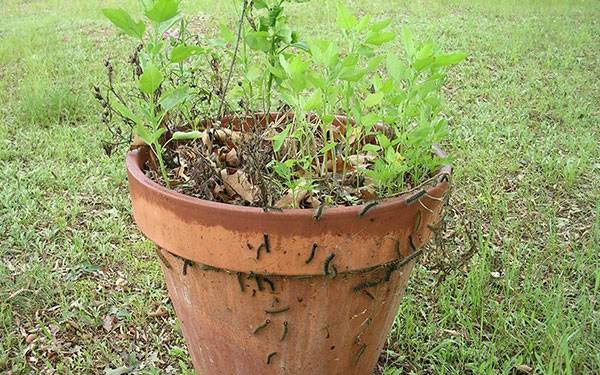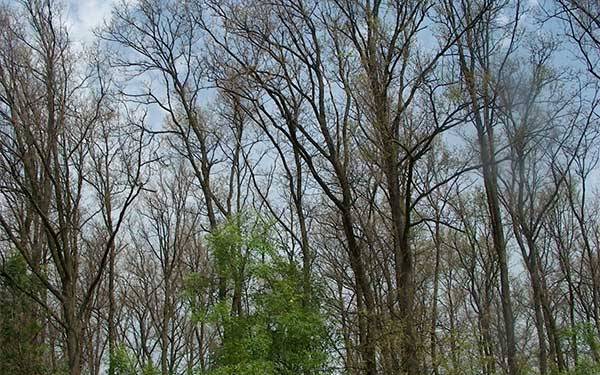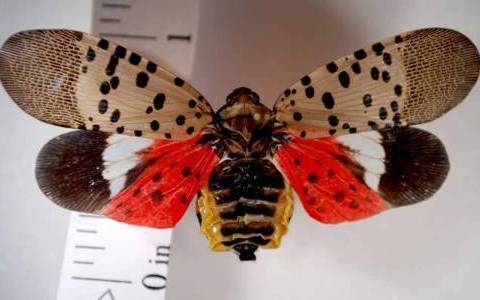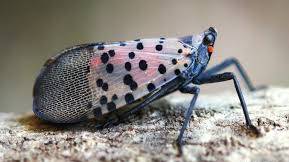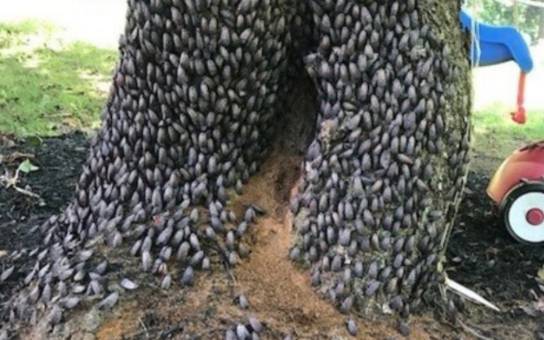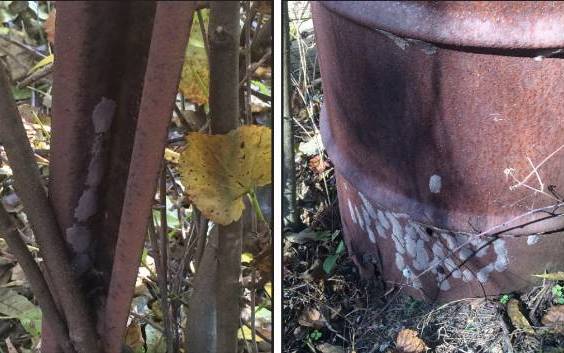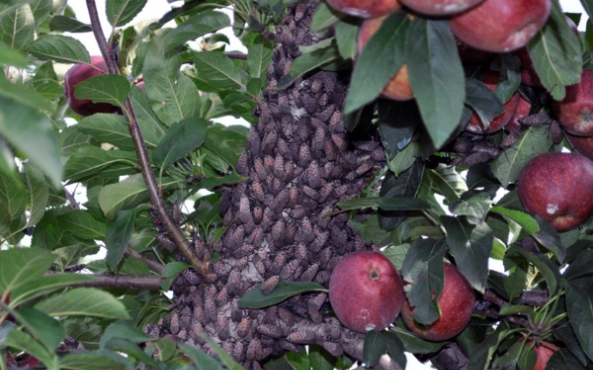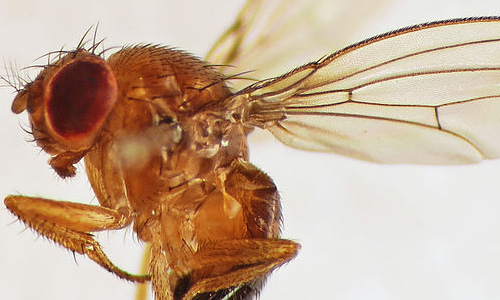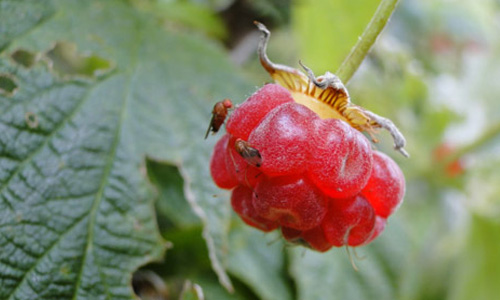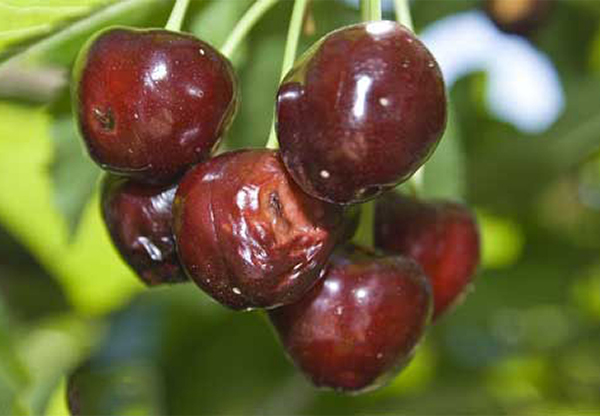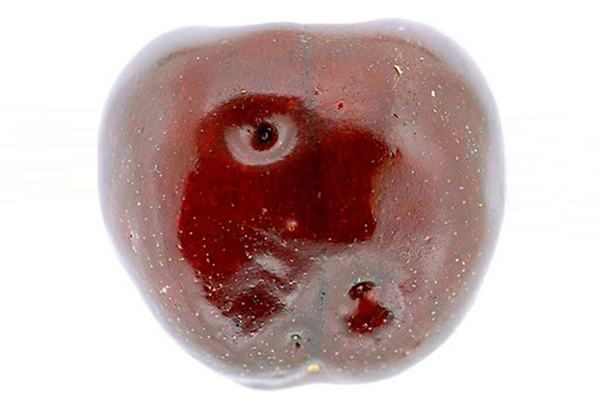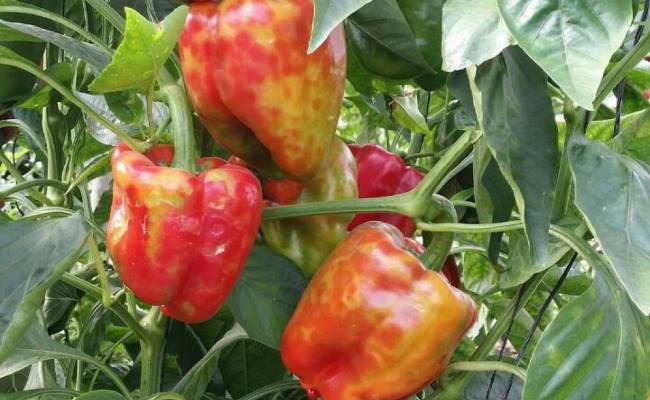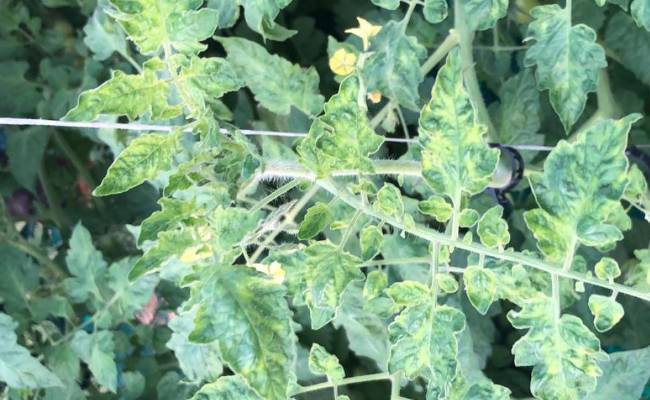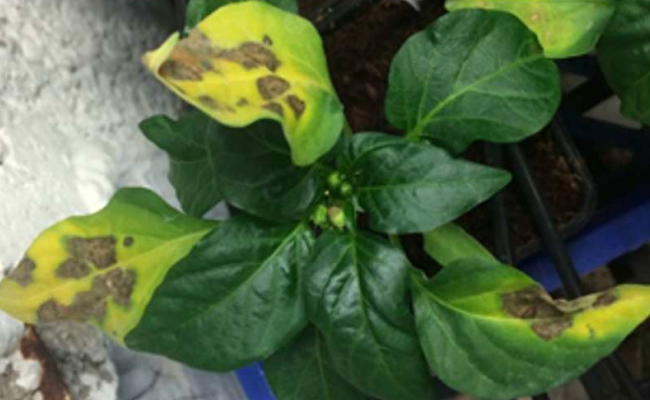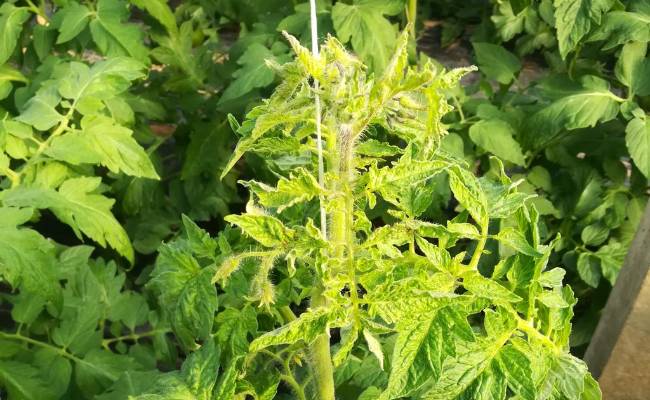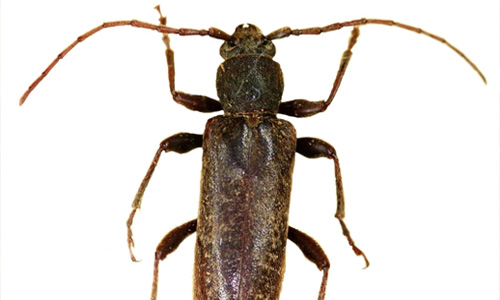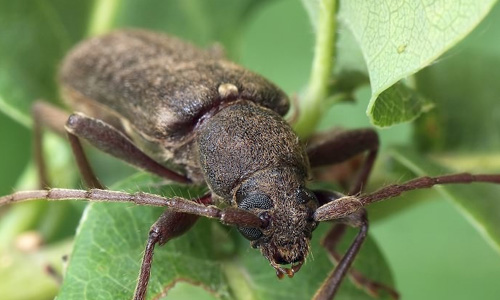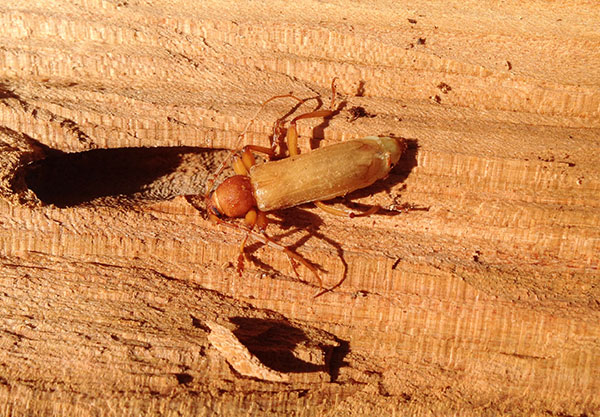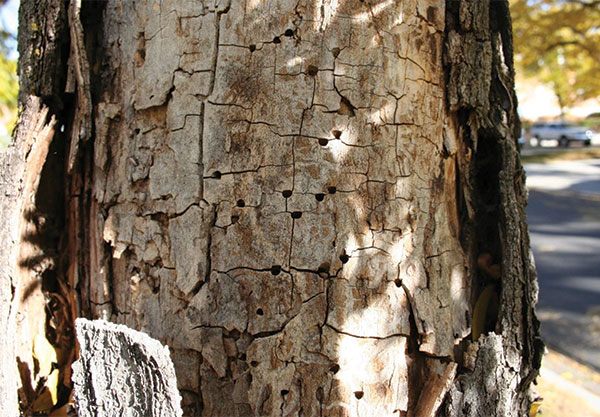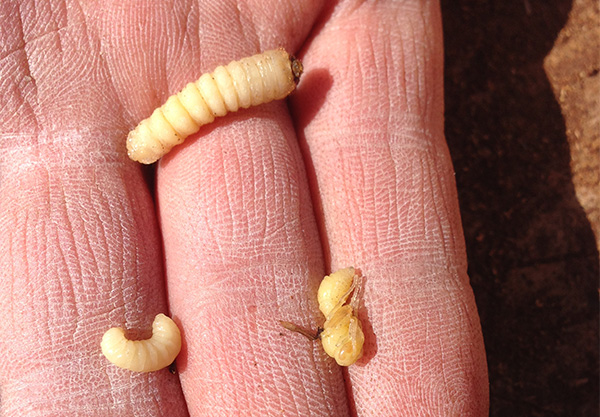Invasive Pests
Featured Pests
This page lists exotic pests that are either recently detected in the U.S. or in Utah, or exotic pests of elevated concern that are NOT found in the U.S. but are on a high-priority pest list.
For more invasive species information, reference the First Detector Guide to Invasive Insects, Invasive Fruit Pest Guide for Utah, Invasive Insect Field Guide for Utah, and Invasive Pests of Landscape Trees in Utah.
Allium Leaf Miner
(Phytomyza gymnostoma)
Not Present In Utah
Allium leaf miner targets leek and onion and was first reported in the Western Hemisphere in 2015 in Pennsylvania. As of 2020, this pest has been confirmed in Delaware, Maryland, Massachusetts, New Jersey, and New York.
Description
Adults are about 1/8 inch in length and have an orange face, yellow "knees", and matte black body.
Damage
Damage occurs on plants in the Allium genus, including leek, onion, garlic, chive, shallot, green onion, wild garlic, and ornamentals, and includes stunted growth, wilting, and curled and distorted leaves. Leaf punctures from egg-laying sites can serve as entryways for bacterial and fungal pathogens. Row covers during spring and fall flight period should prevent crop damage.
Learn More
Asian Longhorned Beetle
(Anoplophora glabripennis)
Not Present In Utah
Asian longhorned beetle (ALB) is an invasive wood-boring pest that threatens over 100 hardwood tree species and maple syrup production. ALB is currently known to occur in Massachusetts, New York, South Carolina, and Ohio, and is considered eradicated from New Jersey and Illinois. The western U.S. is thought to be less susceptible to ALB establishment due to a lack of suitable host plants outside urban areas.
Description
Adults are large beetles roughly 1 inch in length (excluding the antennae) with a glossy black body with irregular white (rarely yellowish) spots. Some adults may have a bluish tinge to their feet and antennae. Larvae can reach up to 2 inches in length.
Damage
Both adults and larvae feed on host trees, although the larvae cause the most damage. ALB bores into host trees to feed, and severe larval infestations can result in dead branches and weakened limbs that leave the tree more vulnerable to breakage during storms.
Learn More
- USU Extension Fact Sheet: Asian Longhorned Beetle
- First Detector Guide to Invasive Insects
- USDA Hungry Pests: Asian Longhorned Beetle
- National Invasive Species Information Center: Asian Longhorned Beetle
Barley Aphid
(Sipha maydis)
This Pest Has Been Detected In SE Utah
Barley aphid is a pest of small grain crops and a vector of barley yellow dwarf virus, and it is native to Europe, the Middle East, Asia, and parts of Africa. In the U.S., known populations occur in isolated areas in the southeastern U.S., California, Colorado, New Mexico, Wyoming, and SE Utah, where it was detected in 2015 in San Juan County.
Description
Adults are easily recognized by the black coloration, white hairs, and short pore-like cornicles (rear projections).
Damage
Damage occurs mainly on wheat and a variety of wild grass species. This pest may be of concern in the future to wheat, barley, and sorghum production if populations continue to increase and its range continues to expand.
Learn More
Brown Marmorated Stink Bug
(Halyomorpha halys)
Present In Utah
Brown marmorated stink bug (BMSB) is both a major pest of many agricultural crops and a nuisance pest for homeowners. This Asian native currently occurs in more than 40 U.S. states. It was first detected in Utah in 2012, and has been found in Box Elder, Cache, Carbon, Davis, Kane, Salt Lake, Utah, and Weber counties as of May 2016.
Description
Adults are shield-shaped, about 1/2 inch long and wide with smooth, rounded shoulders, and have a distinct light and dark banding pattern on antennae, legs, and the posterior edge of the back. Newly hatched nymphs have yellow-red backs with black stripes, and darken with age.
Damage
BMSB feeds on vegetation and fruits of a broad range of plants; fruits and vegetables are especially vulnerable to this pest. Common feeding damage symptoms include dimples, pits, discoloration, and softening of fruits, "cat facing", and corklike tissue. BMSB is not directly harmful to people, pets, or buildings.
Learn More
- USU Extension Fact Sheet: Brown Marmorated Stink Bug
- Invasive Fruit Pest Guide for Utah
- www.StopBMSB.org
Emerald Ash Borer
(Agrilus planipennis)
Not Present In Utah
Emerald ash borer (EAB) is an invasive woodboring beetle that has caused the decline and mortality of tens of millions of ash trees (Fraxinus spp.) in the U.S. It is considered the most destructive forest pest to ever invade North America. It is native to Asia and parts of Russia and now occurs in 26 eastern and midwestern states and its range is rapidly expanding. It has not been reported in Utah, but two infestations in nearby Colorado have recently been reported.
Description
Adults are metallic-green beetles about 1/2 inch long with bronze heads, short antennae, and iridescent purple-red abdominal segments beneath their wings. Larvae are cream-colored with 10 body segments and can reach a length of 1 inch when mature.
Damage
EAB attacks all North American ash (Fraxinus) species irregardless of size and health condition. In Utah, two native ash species are susceptible to EAB: singleleaf ash (Fraxinus anomala) and velvet ash (Fraxinus velutina). Additionally, the substantial numbers of planted ash in Utah's urban canopies are also susceptible to EAB attack. Larvae are the primary damaging life stage and are responsible for killing trees. Infestations are difficult to detect, especially during the early stages of invasion. Infestations are difficult to detect, especially during the early stages of invasion
Learn More
- USU Extension Fact Sheet: Emerald Ash Borer
- First Detector Guide to Invasive Insects
- Emerald Ash Borer Information Network
European Cherry Fruit Fly
(Rhagoletis cerasi)
Not Present In Utah
European cherry fruit fly (ECFF) is a serious invasive pest of cherry fruit crops. This European native was initially detected in North America in Ontario, Canada in 2016 and in New York in 2017, and a quarantine currently exits that restricts movement of articles associated with this pest in these areas. It has been intercepted more than 100 times at U.S. ports of entry since 2000, with all interceptions occurring on Prunus spp. fruit found in passenger baggage.
Description
Adults range in size from 1/8 to 3/16 inch and have yellow to orange heads, transparent wings with dark bands, and a black body with a large yellow dot visible on the dorsal surface.
Damage
Larvae are the most damaging life stage as they feed on fruits, and losses can be up to 100% if left uncontrolled.
Learn More
Japanese Beetle
(Popillia japonica)
Present In Utah
Japanese beetle (JB) is an invasive insect from Japan that has an extensive plant host range. Since the 1970s, JB has been found throughout many western states including Utah (2006), when an eradication program successfully eliminated JB from the state. In 2019, 36 beetles were captured in Salt Lake County and seven in Davis County – the highest in more than a decade. UDAF declared an emergency in 2020 and is now working once again to eradicate this pest.
Description
Adults are about 1/2 inch long and have a metallic green head and mid-section with copper-brown wing covers and white hair tufts along the sides of the abdomen. Larvae are creamy white grubs with a grayish-brown hind end and range in size from 1/8 inch when hatching to 1 inch at maturity.
Damage
Adult JB feed on the foliage of over 300 species of ornamental and crop plants, while the larvae primarily feed on the roots of turf grasses and, to a lesser extent, roots of young ornamental trees and shrubs, and some garden crops. Damage to grasses becomes apparent during late summer and early fall.
Learn More
- USU Extension Fact Sheet: Japanese Beetle
- First Detector Guide to Invasive Insects
- Invasive Fruit Pest Guide for Utah
Khapra Beetle
(Trogoderma granarium)
This pest is now considered eradicated in the U.S., but ongoing surveys exist due to its potential to greatly damage grain products and seeds. Khapra beetle is native to India and is now established in the Mediterranean, Middle East, Asia and Africa. It was first detected in the U.S. in California in 1953 and was reported from several states thereafter, but populations were quickly destroyed. More information about this pest can be found here.
Lily Leaf Beetle
(Lilioceris lilii)
Not Present In Utah
The lily leaf beetle (LLB) is a an important pest from Eurasia that threatens native and cultivated true lilies and fritillaries. LLB adults and larvae create large holes as they feed, and all parts of host plants can be consumed. LLB is likely capable of establishing throughout most of the U.S. where Liliaceae plants occur, which includes Utah.
Description
Adults (Figs. 1 to 3) are from 1/4 inch to 3/8 inch (6 to 9.5 mm) in length. The thorax and abdomen are shiny and scarlet red in color with tiny dimples, whereas the head, legs, antennae, and undersides are black. Larvae are about ½ inch (12 mm) in length when mature and cover their bodies with excrement.
Damage
Adults and larvae create irregular holes and notches in leaves, stems, and developing buds of host plants as they feed, and severe feeding damage can result in destroyed flowers and severe plant defoliation.
Learn More
Plum Pox Virus (PPV)
(Potyvirus Plum Pox Virus)
As of October 2019, this pest is now considered eradicated in the U.S. following a 20-year collaborative effort. More information can be found here.
Spongy Moth
(Lymantria dispar dispar)
Not Present In Utah
Spongy moth is the new name for European gypsy moth, whose name was changed in 2022 due to cultural sensitivity. These flightless defoliating pests threaten U.S. forests as well as trees and shrubs in all landscapes. Spongy moths are native to Europe and are established in the eastern U.S. and occur other parts of the country. Spongy moths have previously been found and successfully eradicated in Utah. However, recent introductions of a flighted Asian subspecies, Lymantria dispar asiatica have occured from foreign cargo ships (including in Oregon and Washington), but to date, eradication efforts have been successful. Lymantria dispar asiatica is not established in the U.S. and has not been detected in Utah.
Description
Adult males are grayish-brown moths with a ~1 1/2 inch wingspan; adult females are about an inch larger, with black wavy markings on creamy white wings. Both sexes have an inverted V-shape that points to a dot on the wings. Older larvae are distinguishable with long, tan bristles, five pairs of blue spots followed by six pairs of red spots lining the back, and yellow spots along the sides of the body. Mature larvae can reach 2 1/2 inches in length.
Damage
Larvae feed on the foliage of hundreds of tree species, preferring oak, aspen, apple, birch, and poplar, but they will also infest many other species as well as several western conifers. Some research suggests that spongy moths may be able to adapt to unsuitable host plants. Extensive feeding leaves trees weakened, more susceptible to drought, diseases and other pests, and can eventually kill trees and entire forests. The presence of spongy moths can lower property values in infested areas.
Learn More
- USU Extension Fact Sheet: Spongy Moth
- USDA Forest Service: Gypsy Moth
- First Detector Guide to Invasive Insects
Spotted Lanternfly
(Lycorma delicatula)
Not present In Utah
The spotted lanternfly (SLF) is a large sap-feeding planthopper from China and is a new North American invasive species, first detected in the U.S. in Pennsylvania in 2014. As of September 2020, established populations have been reported in Connecticut, Delaware, Maryland, New York, New Jersey, Virginia, and West Virginia. SLF can damage hardwood and ornamental trees as well as fruit trees and grape, and is considered a nuisance pest.
Description
Adults are are about 1 inch long and have a piercing-sucking mouthpart. The forewing is gray with black spots, and the wing tips have closely spaced reticulated black blocks. The hind wings, which are visible during flight, have striking red, black, and white patches, and the abdomen is yellow with broad black bands. Eggs masses are about 1 inch long and covered by a wax that appears mud-like as it dries. Nymphs are also striking in appearance: the first 3 instars are black with white spots; the 4th instar develops red patches in addition to the white and black coloration.
Damage
SLF are broad generalists that suck sap from more than 103 plant species, and damage is inflicted by both adult and immature life stages. Hosts include grape, fruit trees, and hardwood/ornamental trees, and egg masses have been found on 172 species to date. Adults show a strong host preference for tree-of-heaven (Ailanthus altissima), an invasive plant from China that is widely established in the U.S. SLF is considered a nuisance pest as it can congregate in large numbers, and excrete large amounts of sticky honeydew that coats surfaces, attracts unwanted insects, and promotes mold growth.
Learn More
- USU Extension Fact Sheet: Spotted Lanternfly
- First Detector Training: Spotted Lanternfly
- USDA Hungry Pests: Spotted Lanternfly
Spotted Wing Drosophila
(Drosophila suzukii)
Present In Utah
The spotted wing drosophila (SWD) is an economic pest of soft fruits and vegetables. It is native to parts of Asia, India, and Russia, and was first detected in the U.S. in California in 2008. In Utah, it was first discovered in a raspberry and blackberry field in Kaysville (Davis County).
Description
Adults are about 0.1 inch long with red eyes, feather-like antennae, and a pale brown body with unbroken bands on the backside of the abdomen. Males have a single black spot on the edge of each wing. Females can be distinguished from similar flies by their large, saw-like ovipositor (egg-laying device) located on the back of their body. A hand lens or dissecting microscope is helpful for identifying specimens.
Damage
Other species of vinegar flies only attack fruit that is overripe or rotten, but SWD females lay eggs on fruit in all stages of ripeness. Because it will lay eggs in fruit still maturing on the plant, larvae can be present in fruit that is harvested for market. The larva is the main damaging life stage; the female fly punctures fruit when laying eggs which can introduce secondary pathogen infections.
Learn More
- USU Extension Fact Sheet: Spotted Wing Drosophila
- First Detector Guide to Invasive Insects
- Invasive Fruit Pest Guide for Utah
Tomato Brown Rugose Fruit Virus
(Tobamovirus Tomato Brown Rugose Fruit Virus)
Not Present In Utah
Tomato brown rugose fruit virus (ToBRFV) is a new pathogen that targets tomatoes, peppers, eggplant, and other solanaceous hosts. As of June 2020, a Federal Order exists to restrict movement of materials associated with this virus, and affects imports of tomato and pepper seed lots, transplants, and fruit from countries where ToBRFV exists. ToBRFV can be confirmed only from laboratory tests.
Description
ToBRFV is closely related to the tobacco and tomato mosaic viruses, but unlike its relatives, this virus can overcome genetic resistance and cause symptoms on otherwise resistant tomato varieties. Symptoms include leaf chlorosis, mosaic, mottling, and distortion, as well as premature fruit drop, dying stems, and smaller and fewer fruits that are discolored, deformed, or necrotic. Young plants exhibit the most severe symptoms.
Damage
This virus is transmitted in seed and is easily spread by contact with contaminated material such as infected plant material, hands, and clothing.
Learn More
Velvet Longhorned Beetle
(Trichoferus campestris)
Present In Utah
The velvet longhorned beetle (VLB) is a wood-boring beetle that poses a threat to Utah’s orchards, landscapes, and riparian woodlands. VLB is native to Asia and Russia and was first detected in North America in Quebec (2002), and then Rhode Island (2006). In Utah, VLB was first found in South Salt Lake City in July 2010. Detection traps in orchards, ornamental landscapes, and along natural waterways indicate that VLB is widespread in Salt Lake and Utah counties.
Description
Adults are up to 3/4 inch long, with an elongated brown to orange colored body, and long parallel wing covers. The name “velvet” comes from the fine hairs irregularly distributed along the adult wing covers and body.
Damage
Larvae burrow into the tree bark and feed in the trees' active layers, disrupting nutrient and water movement. VLB prefers apple, mulberry, and a number of hardwood and conifer tree species in its native range; live tree hosts in Utah include sweet cherry and peach trees and potentially include many cultivated and wild species. Many tree species may also serve as dry wood hosts for VLB. Nursery trees are susceptible hosts for the larvae and may act as a reservoir for dispersing to new areas. Fruit yield, tree longevity, and wood marketability can all be negatively impacted by VLB.
Learn More
- USU Extension Fact Sheet: Velvet Longhorned Beetle
- First Detector Guide to Invasive Insects
- Invasive Fruit Pest Guide for Utah


